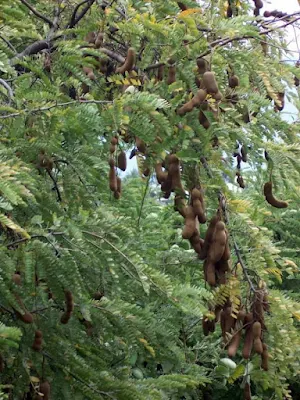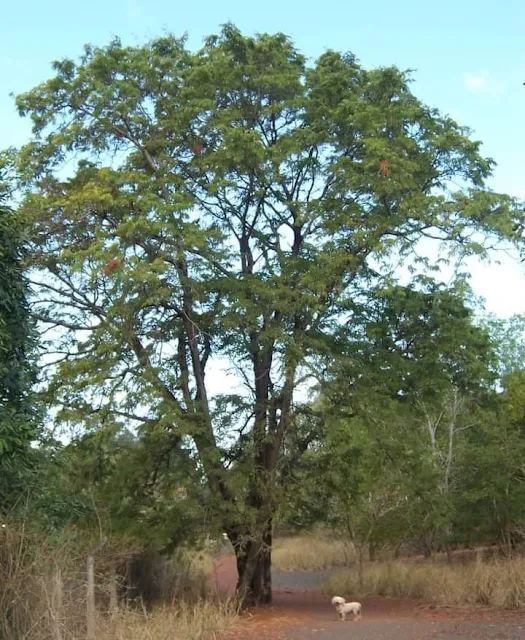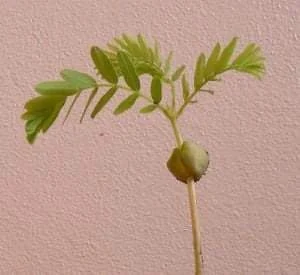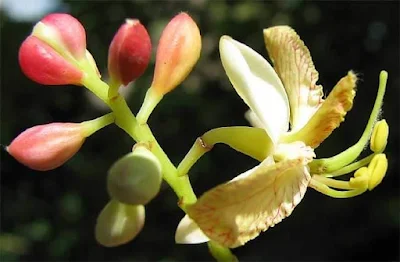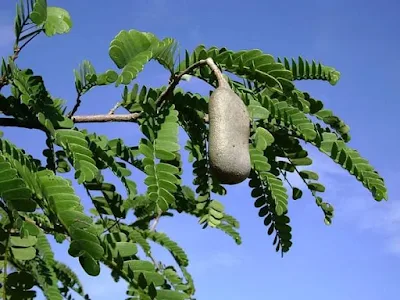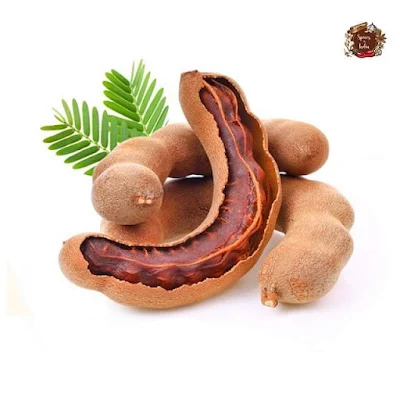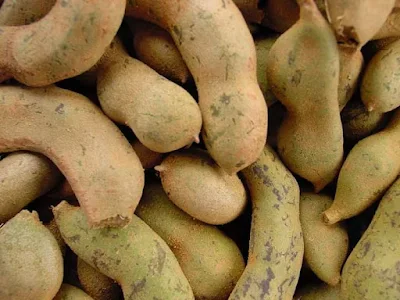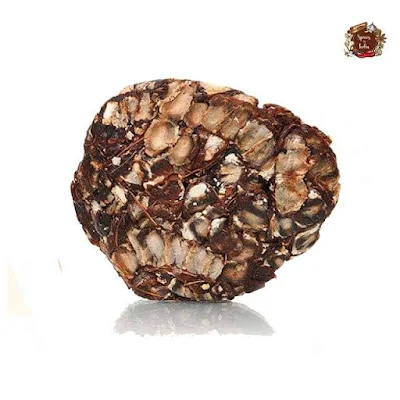Did you know that Tamarind, a long lived and beautiful fruiting tree, is interestingly used as a weather forecaster in Rajasthan whe, n the fruits is longer than usual, by predicting spledid weather with copious rainfall promising good yeild of grain and pulse crops?
Tamarind or specifically Tamarindus indica, or Dates of India, also known as Amalika, a leguminous tree (family Fabaceae) bears edible fruit, is indigenous to India and tropical Africa. The genus Tamarindus is monotypic, meaning that it contains only this species. Rural and urban dewellers use its versatile fruit pulp, in every country where it is grown, for its sweet and sour flavour. Virtually every part of the tree, wood, root, leaves, bark, and fruits are used for domestic and industrial purposes as well as in agroforestry.
It is thought that the specific epithet indicus suffixed to Tamarind is because the name tamarind itself was derived from Arabic which combined Tamar meaning 'date' with Hindi meaning 'of India'. The full Arabic name was Tamar -u'l - Hind and the word date included because of the brown appearance of tamarind pulp.
Historically, Tamarind cultivation was known in Egypt in 400 BC, mentioned in the Indian Brahmasamhita scriptures between 1200-200 BC. Trade between Mediterranean and the Orient in the first millenuimm BC, and traders carried this tree species to differenet parts of the world, probably first to Africa. By 1000 AD, Marcopolo recorded that Arab traders made Tamarind an important commercial item in Medieveal Europe. As result, Tamarind now grows best in drier areas of the tropics, subtropic though it also does well in much wetter, monsoon areas so long as there is a distinct dry season. In India, it is grown throughout the country and even as large planations in some states; extensive tamarind orchards in India produce 275,500 tons (250,000 MT) annually. India is thus the largest producer of tamarind. Its consumption is widespread due to its central role in the cuisines of the Indian subcontinent, Southeast Asia, and the Americas, especially Mexico.
While its English name is Tamarind, Indian Date, in Vernacular usage in India, it is called: Amalika, Umblee, Vrksamla in Sanskrit; Hunuse mara (ಹುಣಸೇ ಮರ), Unsi, Hulimara, in Kannada;Pulinje in Coorgi; Imli, Ambli, Amili in Hindi; Puli, Pulian, Yukini, Yukinimaram in Tamil; Tintrini, Tintrinikamu, Chinta in Telugu; Amlika, Valampuli in Malayalam; Aambali, Aamli, Chitz, Hunchi in Marathi; Amali, Ambali in Gujarati; Tintri, Tintul , Tetul in Bengali; and Tetili in Asaamese.
Tamarind, a long lived and beautiful fruiting tree, grows 20-30 metres tall with thick trunk upto 1.5 to 2 m and upto 8 m in cirumference, has a dense, spreading crown. It grows well in full sun. It prefers clay, loam, sandy, and acidic soil types, The tree bears fragrant flowers and a feathery foliage that is usually evergreen but becomes deciduous in drier region.
Tamarind tree bears evergreen leaves which are alternately arranged and pinnately lobed. Its pinnate leaves with opposite leaflets give a billowing effect in the wind. The tamarind flowers are red and yellow elongated, about 2.5 cm wide (one inch), five-petalled, borne in small racemes, and yellow with orange or red streaks. Buds are pink as the four sepals are pink and are lost when the flower blooms. Leaves are also used as a vegtable in some communities, as they are a good source of calcium, Vitamin C and beta carotene Its ;eaves are used as fodder for domestic animals and wild animals including elephants.
It is a tart pod fruit that is brown when ripe, has sticky pulp with a sour, sweet and tangy flavour. The fruit is an indehiscent legume, sometimes called a pod, 12 to 15 cm (4+1⁄2 to 6 in) in length, with a hard, brown shell. Pulp has low water content and high level of proteicn , carbohydrates (60 to 72%) and minerals. The fruits contains vareity of pigments. It is sweet and acidic to taste due to tartaric acid. In general, the dried tamarind pulp of commerce contains 8-18% tartaric acid and 25-45% reduicing sugars of which 70% is glucose and 30% is fructose. Pulp is also rich in minerals high in potassium , phosphorous and calcium and a fair source of iron. It is beneficial to human health due to its high phenolic content and mineral elements with high antioxidant capacity
A mature tree may be capable of producing up to 175 kg (386 lb) of fruit per year.
Tamarind Seeds and kernel, rich in protein are the raw materials used in the manufacture of tamarind seed kernel powder (TKP), polysaccharide (jellose), adhesive and tannin. It gives an ambered colour oil, free of smell and sweet to taste and used for varnishes, paints and burning oil lamps,
Tamarind is a highly sacred tree in indigenous folk culture of India and many other countries and thus Tamarind and sacred groves are preserved. In many parts of India, the tree is considered to be haunted by spirits and is worshiped on a day known as Amli Agiaras. Hindus also tie a tamarind tree to a mango tree before eating the fruits of the latter and in effect marry the species. Interestingly, it is used as a weather forecaster in Rajasthan (India) when the fruits grow longer than usual by predcitng splendid weather with copious rainfall promising good yield of grain and pulse crops.
Tamarind tree leaves, flowers and immature pods are also edible. Leaves are used to rear silkworms. It is host for the lac insect , Kerria lcacca that deposits a resin on its twigs and this is extracted and sold as stick-lac for the production of varnishes and lacaquers Its wood, which resembles ebony, is used for a variety of products such as furniture, wheels, mallets, rice pounders, mortars pestles, ploughs, construction of well, tent pegs, side planks for boats , cart shafts and axles and naves of wheels tool handles and so forth. Wood is also good as a fuel.
Tamarind trees are common sight, used as ornamental (evn as indoor ornamentatiion in USA) and shade trees and planted along avenues roadsides, in parks and along river banks.
Tamarind's medicinal values mentioned in Sanskrit literaure are as laxatives of the pulp and duiretic properties of the leaf sap. It is used extensively in tarditional Indian Ayurveda and African medicines also to some extent in Europe. Tamarind fruit exhibits laxative effects due to its high quantities of malic acid, tartaric acid, and potassium bitartrate. Its use for the relief of constipation has been documented throughout the world. Tamarind pulp alone or in combination with lime juice, honey, milk, dates, spices or camphor is used as a digestive and a carminative. It is said to improve loss of appetite. The fruit of the tamarind is used as a poultice applied to foreheads of fever sufferers.
In India, its acidic pulp is used widely in culinary prepartions such as curries (sambar and rasam), chutneys, sauces, mixed with cooked rice as Puliyogere in South India and is even a favorite offering to gods in many South Indian temples. The immature green pods are often used by children and adults, particularly pregnant women as a snack by dipping it in salt.
Tamarind tree is a firebreaker as no grass grows under it, and hence extensively planted around forest margins to act as firebarriers.
- Narasipur Char
